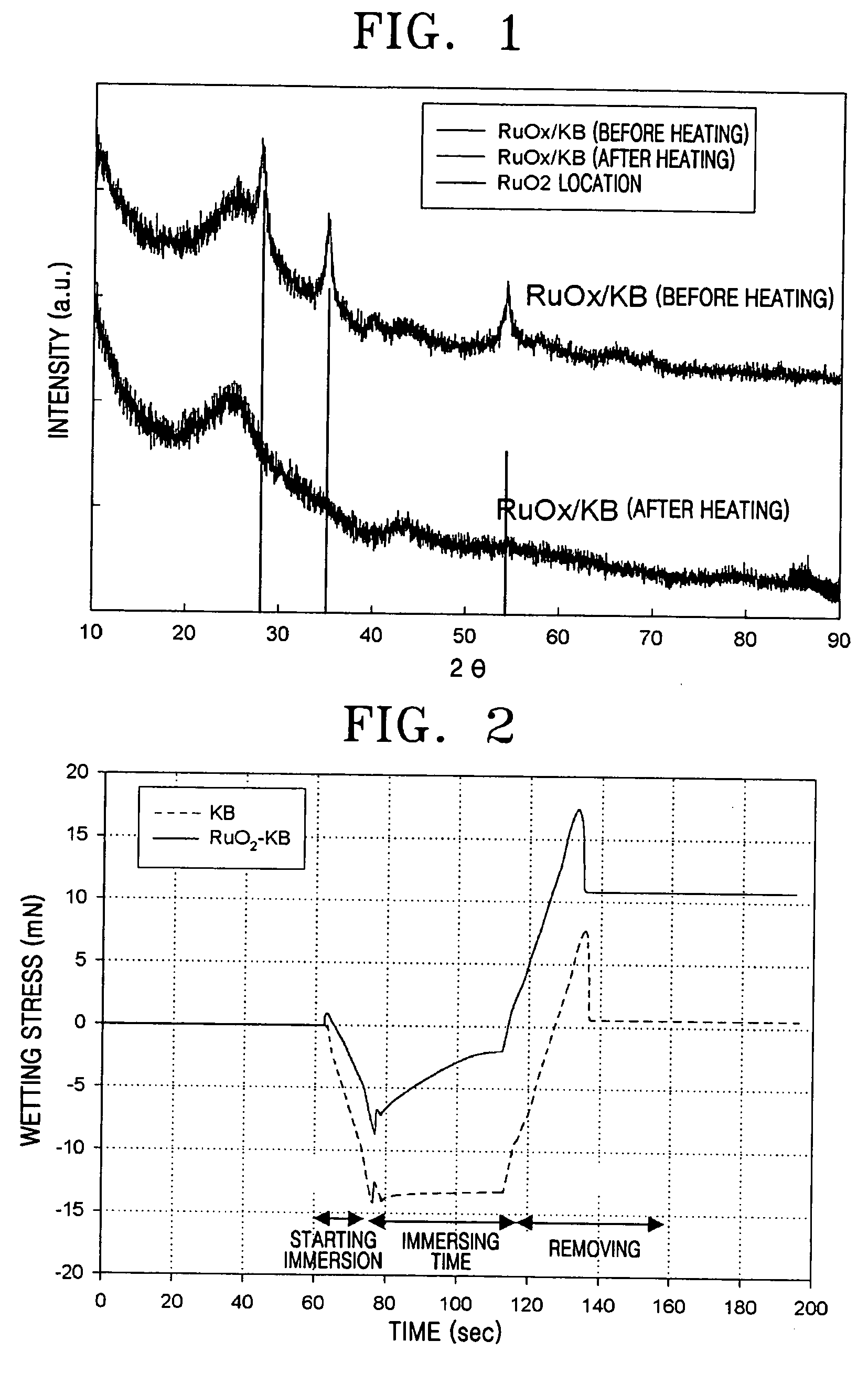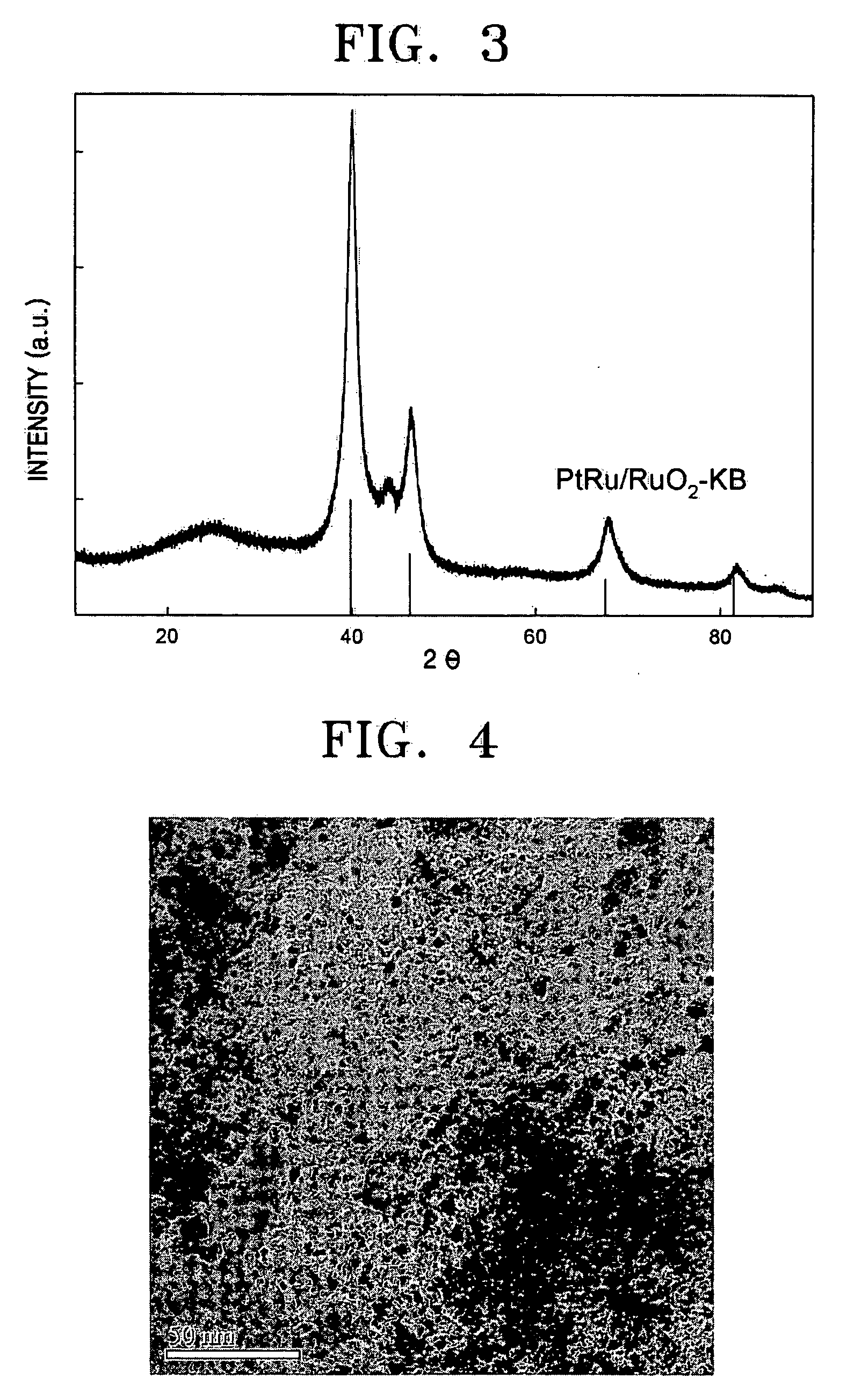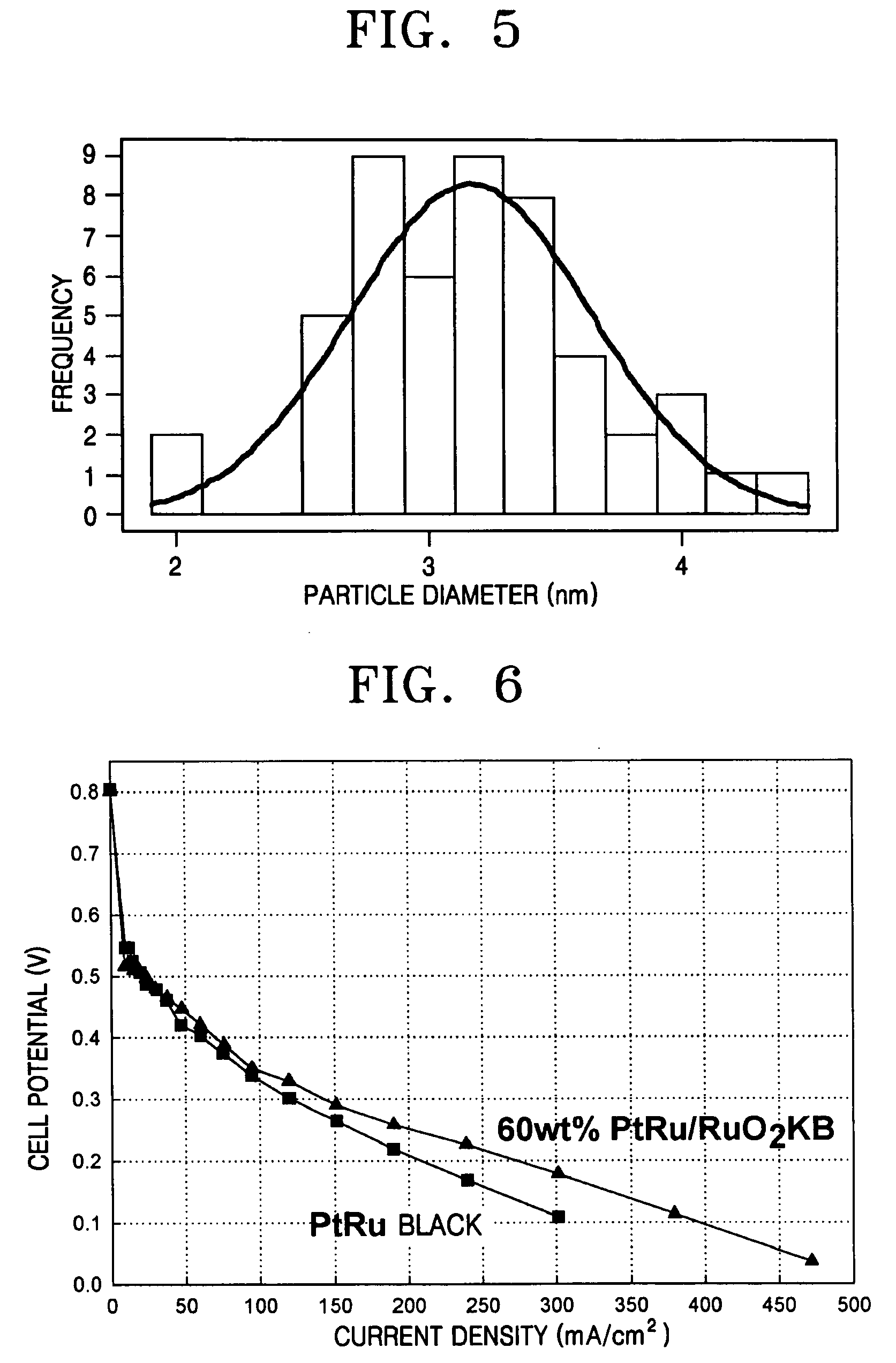Metal oxide-carbon composite catalyst support and fuel cell comprising the same
a technology of metal oxide-carbon composite catalysts and fuel cells, which is applied in the direction of metal/metal-oxide/metal-hydroxide catalysts, cell components, physical/chemical process catalysts, etc., can solve the problems of increasing cost and reducing catalyst activity, and achieves increased electroconductivity and hydrophilicity.
- Summary
- Abstract
- Description
- Claims
- Application Information
AI Technical Summary
Benefits of technology
Problems solved by technology
Method used
Image
Examples
example 1
Preparation of a Catalyst Support
[0042] 1.5564 g of ruthenium chloride was added to 600 ml of ultra-distilled water, and the solution was stirred for 2 hours. NaHCO3 was added to the solution until attaining a pH of 5, so as to form a colloidal solution. Then, Ketjen Black, as a carbon dispersed in 400 ml of deionised water, was added to the colloidal solution, and the resulting mixture was stirred for 24 hours. The resultant was then washed with water and filtered, and a ruthenium oxide-carbon composite support was formed by freeze-drying.
[0043] The dried ruthenium oxide-Ketjen Black composite catalyst support (RuO2—KB) was then heated in a convection oven of 180° C. for 12 hours.
[0044] An X-ray diffraction analysis was performed to investigate the ruthenium oxide-Ketjen Black composite catalyst support's physical properties. FIG. 1 shows the results. As is apparent from FIG. 1, ruthenium oxide, which did not shown crystalline property before heating, showed crystalline property...
experimental example
[0045] A wetting stress and an electroconductivity of the ruthenium oxide-Ketjen Black composite catalyst support were measured in order to evaluate its performance. For comparison, the same properties of a support composed of only Ketjen Black were also measured.
[0046] Measuring the Wetting Stress
[0047] The wetting stress over time for the ruthenium oxide-Ketjen Black composite support of Example 1, and a conventional support of Ketjen Black, were measured. FIG. 2 shows the results.
[0048] As is apparent from FIG. 2, the initial wetting stress of Ketjen Black was about −14 mN and that of the composite support was about −7 mN, indicating a decrease of about 50%. Also, when immersed for about 50 seconds, the wetting stress of Ketjen Black hardly changed from the initial value, but that of the composite support rapidly decreased to about −2 mN.
[0049] As may be seen from these results, the composite support according to an exemplary embodiment of the present invention has higher hyd...
example 2
Preparation of a Catalyst
[0052] 5.128 g of H2PtCl6, 2.123 g of RuCl3, and 2 g of RuO2—KB (synthesized in Example 1) were added to 1000 ml, 1000 ml, and 200 ml of distilled water, respectively. The solutions were mixed and stirred for 2 hours, and a pH of the resulting solution was set to pH 7 by a 0.05 M NaOH solution. Next, 1M NaBH4 was added to the solution, in an amount of 3 times of stoichiometric amount, at a rate of 50 cc / min. The resultant was subject to washing / freeze-drying process to form 60 wt % PtRu / RuO2—KB, which was heated under a hydrogen gas atmosphere at 150° C. for 2 hours in order to increase a catalytic activity.
[0053] X-ray diffraction analysis was performed to measure the physical properties of the prepared platinum ruthenium alloy catalyst (60 wt % PtRu / RuO2—KB). FIG. 3 shows the results.
[0054] Referring to FIG. 3, the main peak of Pt (111) and Pt (220) was higher than the peak of only Pt, indicating that an alloy of Pt and Ru was properly formed. In other ...
PUM
| Property | Measurement | Unit |
|---|---|---|
| particle size | aaaaa | aaaaa |
| temperature | aaaaa | aaaaa |
| temperature | aaaaa | aaaaa |
Abstract
Description
Claims
Application Information
 Login to View More
Login to View More - R&D
- Intellectual Property
- Life Sciences
- Materials
- Tech Scout
- Unparalleled Data Quality
- Higher Quality Content
- 60% Fewer Hallucinations
Browse by: Latest US Patents, China's latest patents, Technical Efficacy Thesaurus, Application Domain, Technology Topic, Popular Technical Reports.
© 2025 PatSnap. All rights reserved.Legal|Privacy policy|Modern Slavery Act Transparency Statement|Sitemap|About US| Contact US: help@patsnap.com



